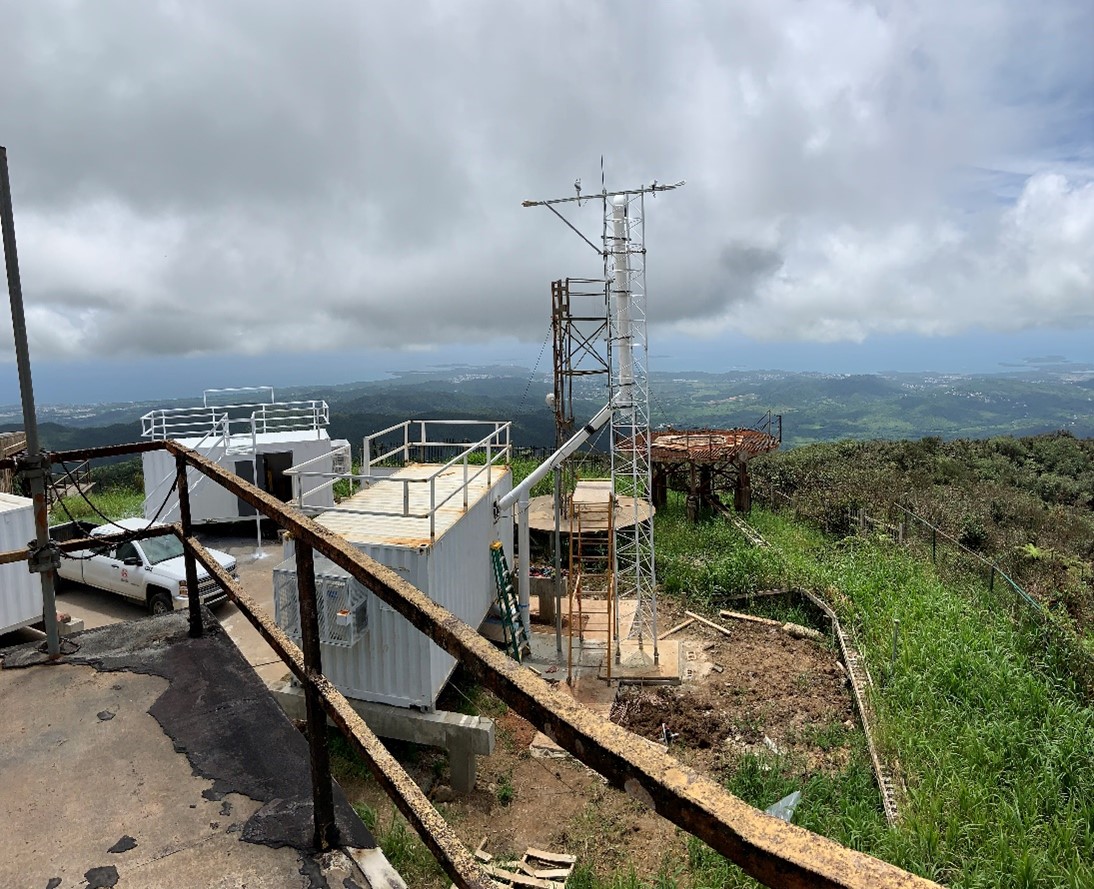
Aerosol and Cloud Analysis System
The Aerosol and Cloud Analysis System (ACAS) is a multi-sensor instrument that will be used to study a wide range of questions related to cloud formation and aerosol and cloud interactions. Given the broad variety of cloud and aerosol properties that the ACAS can measure in real-time and high time resolutions cloud and aerosol processes can be evaluated on scales from hourly to seasonally. The ACAS is located at Pico de Este (PE), the highest spot on the east side of Puerto Rico that is frequently enveloped in clouds. As such, the impact of special events like tropical storms and African Dust, as well as clean marine aerosols or polluted urban air on cloud formation will be studied in great detail. The ACAS consists of many sensors, from which measurements are compiled and stored.
Objective
The Aerosol and Cloud Analysis System (ACAS) is a tightly integrated suite of aerosol and cloud that will be used as a research and teaching tool to:
- Study the formation of clouds from aerosols.
- Investigate how aerosol properties change when they are processed by clouds.
- Instruct students on aerosol and cloud instrumentation.
- Aid in teaching aerosol and cloud physics at the undergraduate and graduate level.
- Support visiting scientist who bring their own instruments.
Science Addresed
- CCN Closure Studies: Reconciliation of concentration of CCN vs Supersaturation measured directly with those predicted from aerosol size and chemistry.
- Cloud Micro-Physics vs Aerosol Properties: Cloud size distributions and LWC as they relate to aerosol size chemistry.
- Cloud Model Validation: Reconciliation of the formation and evolution of cloud micro-physical properties measure and simulated.
- Cloud Chemistry: Cloud water chemicals Analysis and cloud droplet residual analysis. The former using off-line analysis, the latter in real-time.
Sensor Status
Here are the sensors attached to the instrument.